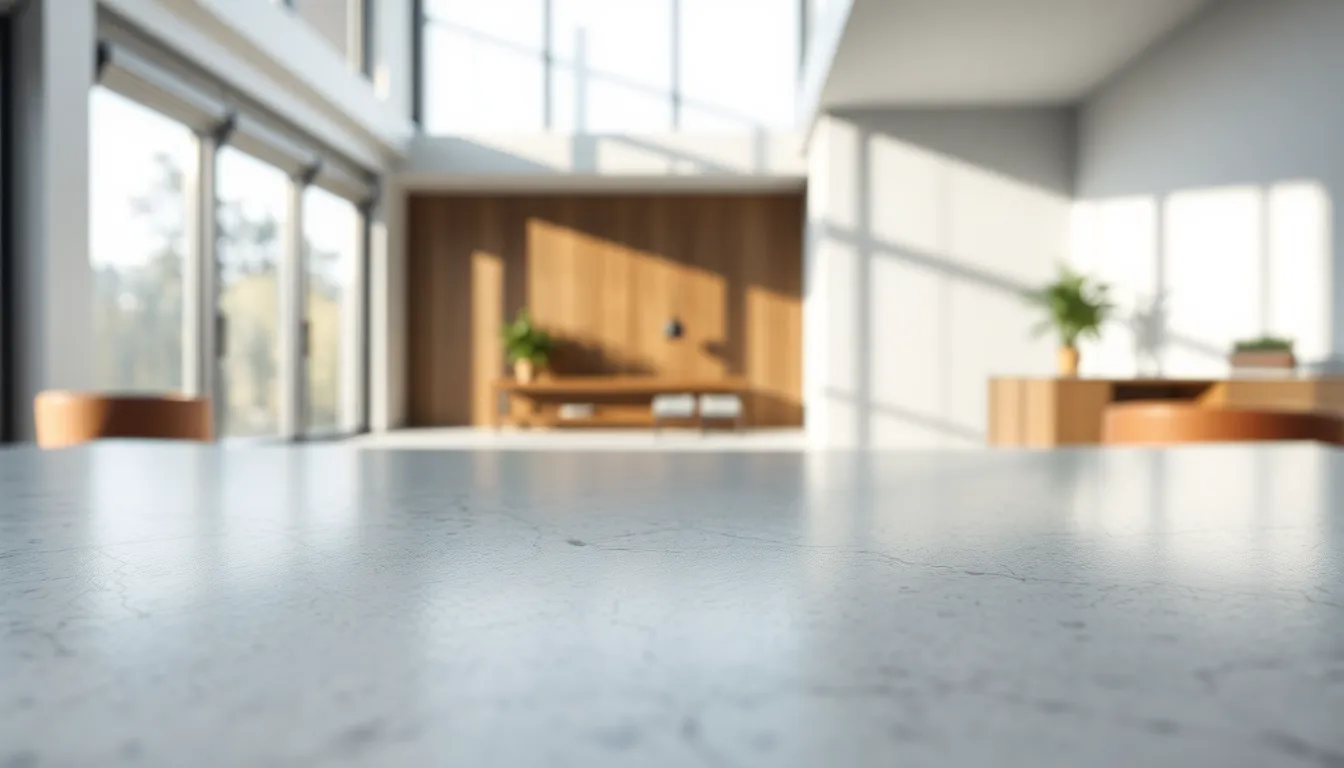Flensutenol texture might sound like a fancy dish at a five-star restaurant, but it’s actually a game-changer in the world of materials and design. Imagine a surface that feels as smooth as a freshly polished marble but has the versatility of a Swiss Army knife. This isn’t just a trend; it’s a revolution in how we interact with our environments.
Flensutenol
Flensutenol represents a groundbreaking innovation in material science. It features a unique texture that feels as smooth as polished marble, created to enhance aesthetic appeal. Versatility characterizes its functionality, allowing it to serve a wide range of applications, from interior design to consumer products.
Durability ranks high among its attributes, making Flensutenol suitable for both residential and commercial environments. Its resistance to scratches and stains preserves its appearance over time, ensuring long-lasting beauty. Users appreciate its ease of maintenance, which simplifies the upkeep associated with standard materials.
Color options vary significantly, offering choices that suit diverse design schemes. Customization possibilities enhance its appeal, allowing designers to create unique looks tailored to specific needs. This adaptability makes Flensutenol an attractive choice in various markets, from luxury homes to modern offices.
Safety remains a priority, and Flensutenol meets stringent industry standards. Non-toxic properties contribute to healthier living spaces, appealing to eco-conscious consumers. Its sustainable production methods also align with growing environmental awareness.
Production processes incorporate advanced technology, ensuring high-quality outcomes consistently. This technological edge enhances performance, contributing to its popularity among architects and designers. As a result, Flensutenol continues to gain traction as a preferred material choice, reflecting changing preferences in contemporary design.
Importance Of Texture In Flensutenol

Texture plays a crucial role in the effectiveness and aesthetic appeal of Flensutenol. This unique material’s texture directly influences its performance across various applications.
Correlation Between Texture And Performance
Flensutenol’s texture significantly enhances its functionality, contributing to its durability and resilience. A smooth surface allows for resistance against scratches and stains. Additionally, the tactile quality elevates user experience, encouraging interaction with the material. Architects and designers value this correlation, as it assists in achieving practical solutions for both residential and commercial projects. Engaging with the texture can lead to further appreciation of its design and utility. As a result, performance becomes an extension of its textured characteristics, making it a preferred choice for modern environments.
Consumer Perception Of Texture
Texture shapes consumer perception of Flensutenol, impacting choices in design and application. Aesthetic appeal attracts individuals to this innovative material, emphasizing its polished look and tactile experience. Customization options invite consumers to explore various colors and finishes, allowing personalized connections. Reviews often highlight satisfaction with its smoothness, further reinforcing positive perceptions. When making decisions, consumers prioritize texture as a vital factor, ensuring that it aligns with their design preferences. Satisfied users often share their experiences, which strengthens the material’s reputation and market presence.
Factors Influencing Flensutenol Texture
Flensutenol texture is shaped by various critical elements. Understanding these factors reveals the material’s unique characteristics and applications.
Manufacturing Processes
Manufacturing processes play a pivotal role in determining Flensutenol texture. Advanced technology ensures high precision during production, which enhances the overall quality. Each step, from mixing components to final polishing, directly affects the smoothness and durability of the material. Utilizing automated techniques fosters consistency in texture across batches. The adherence to strict industry standards further elevates Flensutenol, reducing the risk of defects that can compromise its aesthetic appeal. These highly controlled processes guarantee that the final product meets consumer expectations for functionality and design.
Ingredients And Formulations
Ingredients and formulations significantly influence Flensutenol texture as well. Quality of raw materials directly affects the material’s smoothness and resilience. Each formulation is crafted to optimize performance, leveraging non-toxic components that align with eco-conscious values. Color pigments and additives contribute to customization, allowing for a diverse range of designs while maintaining texture integrity. Balancing these elements ensures the material retains its desirable tactile qualities. Rigorous testing also validates that formulations meet durability standards and aesthetic appeal, promoting long-lasting consumer satisfaction.
Measuring Flensutenol Texture
Measuring Flensutenol texture involves various methods that assess both tactile and visual characteristics. Instruments like profilometers capture surface roughness, providing precise data on smoothness. Visual assessments often include expert evaluations, comparing samples against established quality benchmarks.
Standardized tests contribute to understanding the durability of Flensutenol. Tests for scratch and stain resistance utilize common household substances, demonstrating the material’s practical performance. Observations confirm that Flensutenol maintains its aesthetic appeal even after exposure to everyday challenges.
In addition to physical tests, consumer feedback plays a crucial role in measuring texture. Surveys often gather opinions on perceptions of smoothness and user satisfaction. Positive ratings highlight the importance of Flensutenol’s tactile quality and its influence on design decisions.
Experts in material science recommend combining quantitative and qualitative measures for a comprehensive outlook. Using both types of data offers a clearer picture of how Flensutenol performs under varying conditions. This holistic approach aligns with modern requirements for quality assurance in design and architecture.
Texture measurement not only informs production but also influences marketing strategies. Highlighting Flensutenol’s superior characteristics attracts designers and architects seeking innovative solutions. Emphasizing its consistent quality aligns with industry standards, making it a preferred choice in sustainable architectural designs.
Using a blend of advanced technology and expert insights ensures accurate assessments. Regular testing and validation help verify that Flensutenol meets environmental criteria while retaining desirable properties. Ultimately, this meticulous approach to measuring texture enhances consumer confidence and solidifies Flensutenol’s reputation in the market.
Conclusion
Flensutenol texture stands out as a transformative material in modern design. Its unique combination of smoothness and durability caters to both aesthetic and practical needs. As architects and designers continue to embrace this innovative solution, Flensutenol’s versatility and eco-friendly production will likely drive its popularity even further.
With a focus on quality and user experience, Flensutenol not only enhances spaces but also reflects a commitment to sustainability. The ongoing positive consumer feedback underscores its status as a preferred choice in contemporary design. As trends evolve, Flensutenol is poised to remain a key player, shaping the future of material science and design aesthetics.

